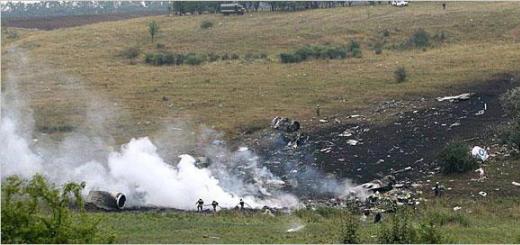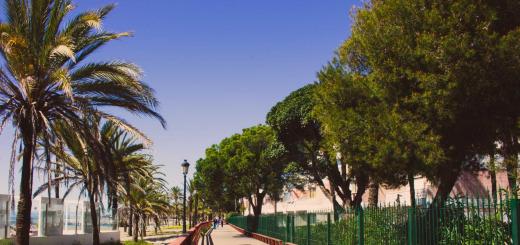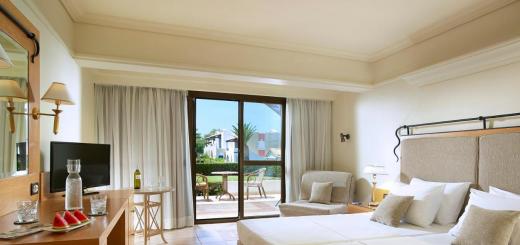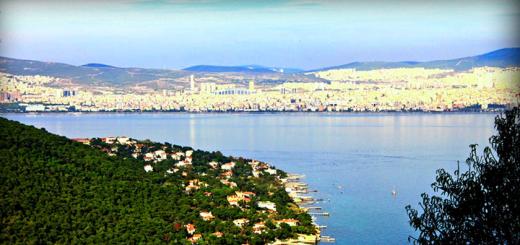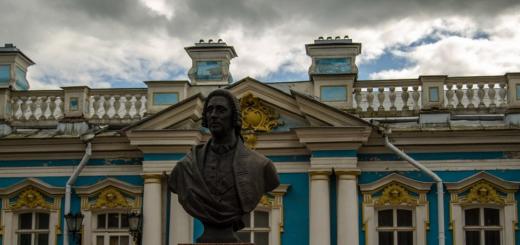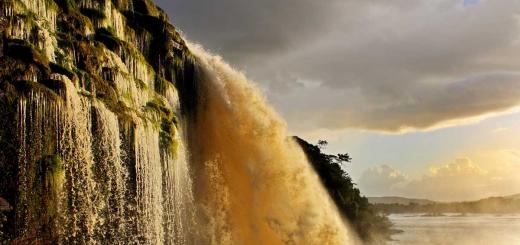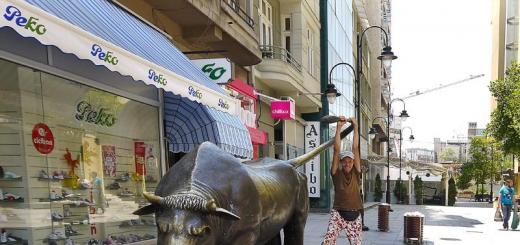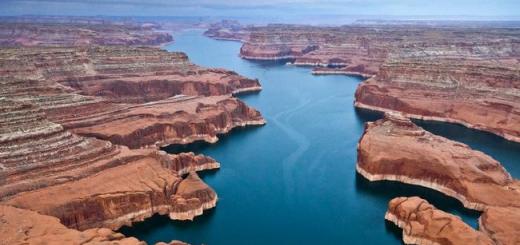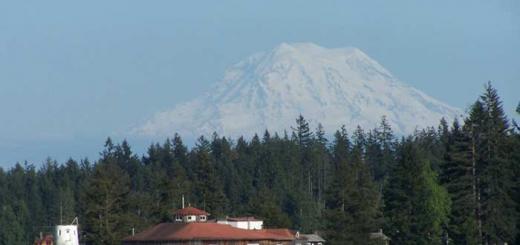Cap de Creus is the easternmost point of mainland Spain and the entire Iberian Peninsula.
The Pyrenees mountains, separating Spain and France, descend here from their sky-high heights and go into the Mediterranean Sea in rocky outgrowths, forming truly unearthly landscapes. 
The constantly blowing piercing sea winds make the vegetation of the cape extremely scarce (mostly thorny bushes), and the volcanic rocks turn into something like a stone sponge.

All this gives the impression of a completely alien landscape that could be a great location for filming sci-fi movies. I think the only reason why this has not happened so far is the very winds. The gusts of the legendary Tramontana are so strong that one has to literally hold onto the rocks so as not to be blown into one of the picturesque bays.


At the far end of the cape there is a lighthouse built on the ruins of an ancient Roman signal tower.

There is another building not far from the lighthouse. Once there was a naval police base, and now it is a bar and a restaurant. The best name for this place would be "Restaurant at the End of the Earth" - this is exactly the feeling you get when you drink whiskey here after a 3-hour walk on the rocks and brain-blown tramontana.

The Catalan end of the world is located 25 kilometers from the border with France, and eight from - the most picturesque fishing town, world famous by Salvador Dali. 
You can get here from Cadaques in 15 minutes by car, or you can walk along a mountain path. The second option will take about two and a half hours, but it will leave a lot of impressions and many great photos to remember.


The most beautiful sight on the Cap de Creus is the sunrises and sunsets. For a number of reasons, we have not yet caught the dawn, but we were lucky to see the sunset on the way back to Cadaques. 
At this point, as usual, the phone's battery ran out, and we watched the most beautiful part of the sunset live, and not through a pixel screen.
You can visit and see with your own eyes all its beauty within our framework.
On the border of sea and land at the most eastern point of Catalonia, Spain and the entire Iberian Peninsula in the Haute Empordà region is located nature Park Cap de Creus (Parque Natural de Cap de Creus).
The park is huge, it includes the Cap de Creus peninsula, part of the Werder Bremen mountain range, several resort towns: Llansa, El Port de la Selva, La Selva de Mar, Cadaques. But above all, when they talk about the park, they mean the cape itself - Cap de Creus - only 13886 hectares in water and on land.
Whichever side you are driving - from the charming town of Cadaqués or from the more modern-looking resort of El Port de la Selva - the road follows a completely intrepid serpentine road among blocks of solidified lava and terraces fortified with small stones with olive trees. These "steps" were built not for convenience, but primarily to delay soil erosion - the scourge of the entire Spanish coast.
Gradually, the "cultural" landscape gives way to completely wild thickets of some Mediterranean shrubs and alien lava fields, and finally, after driving along a narrow isthmus, we find ourselves on a cape.
The lighthouse has a small museum dedicated to the nature park and an information center. There are a couple of small cafes nearby.
In the information center, you can take a diagram of the park's trails, laid along the most beautiful places... But, unfortunately, the markings are not very good, where the paths are sometimes completely incomprehensible, so the scheme is needed first of all to learn about interesting places and roughly understand which way to go.
Many people do not even try to look for trails - they just drive to the lighthouse, take a few photos, go to a cafe, and drive back. And in the summer they try to quickly find a cozy bay and retire in it. Which, however, turns out badly: the coastal thickets at the height of the season resemble Moscow parks on a nice Sunday afternoon.
Don't want to spoil the experience - don't go to the park in July or August, especially on weekends.
More information about Cap de Creus can be found on the official site for Natural Parks of Catalonia. There you can also download a brochure describing all the parks in the region.
How to get to the Cap de Creus Natural Park
Usually navigators, if they "score" this park, lead exactly to the cape. It will not be difficult to find it on the map either - it protrudes strongly into the sea. From neighboring Cadaques or El Port de la Selva, small signs lead to the lighthouse. It is almost impossible to get lost, because there is no special variety of roads - you just need to go along the main road. From the French border to these places - about 26 kilometers, from Cadaques - about 8.
There is a medium sized car park next to the lighthouse. They say that there are no places there during the peak season. There are also several small parking lots along the road, before reaching the lighthouse. All these places are unguarded and free.
If you have time, you can walk to the cape, according to the signs, from Cadaques on foot - the road is incredibly beautiful and passes by the bays that are not visible from the car window.
If you leave the cape, you can see many more interesting things in the park. For example, the medieval one, built high in the mountains above the city of El Port de la Selva.
When you are going to the Cap de Creus, dress warmly: the strongest wind, the legendary Tramontana knocks people down and almost blows away cars.
Cap de Creus is translated from Catalan as "Cape of the Cross". National park Cap de Creus is nature reserve north coast Costa Brava.
History of origin
On the Costa Brava, in the northeast of the province of Catalonia, there are centuries-old ruins and traces of Roman and Greek civilizations. Numerous monuments and ancient traditions are of the greatest historical and cultural significance.
The founders of Catalonia are considered to be the Germanic barbarians who came to the Pyrenees peninsula in the 4th century. For a long time, peoples fought for the autonomous status of Catalonia, rulers were replaced and lands were annexed. It was only at the end of the 19th century that Catalonia gained its independence, and the local language became the second official language in Spain.
Today this region is one of the most prosperous and fastest growing in Spain.
On the Costa Brava you can see ancient castles and fortresses, ancient ruins, churches and temples, monuments and museums. And all this is combined with modern infrastructure.
Cap de Creus became the first natural park here. National park, which is located on almost 11 hectares of land and more than 3 hectares of the sea.
Architecture
The Cap de Creus peninsula is a steep coastline with granite rocks surrounded by amazing, unique nature. Due to the constant strong wind, only some types of trees grow here, some of which are the only ones on the planet. Within the territory of national park can see a large number of migratory birds, as well as swallows and ravens. Sea bottom differs in the presence of red corals. Falcons and eagles nest on the outskirts of the rocks.
The Cape of the Cross also deserves attention due to its austere surrounding landscapes, which inspired Salvador Dali so much.
Neighborhood
One of the most famous places in the national park is the monastery of San Pere de Rodas, located on the slope of Mount Verdera. According to legend, it is named after St. Peter, whose remains were located here in 610.
The main value of this place is the church, made in Romanesque architecture. There is a spring nearby - the Spring of the Monks, in which, according to legends, sacred water flows.
In the fortress there are copies of the fragments that adorned the door of the monastery - the holy lamb with a halo and Jesus Christ with his disciples. Many ancient buildings were found on the territory of the monastery, some of them, according to the testimony of scientists, were built before our era.
The attractions of the Costa Brava include Lloret de Mar. He is rightfully called tourist capital, since the most diverse places for recreation are collected here. History buffs should visit ancient ruins the city of Loredo, and Old city with its amazing monastery of Agia Cristina and the temple of San Roma. And for lovers of entertainment, there are two beaches within the city, washed by azure, crystal clear water. In Lloret de Mar you can go horse or carriage rides, play a variety of sports and go diving. Not far from the embankment there is the famous Water World water park and a mini-zoo for children.
There are numerous resort hotels therefore it will not be difficult for tourists to find a suitable place to stay. Local cafes and restaurants offer cuisine for every taste.
Tourist notes
You can get to the Costa Brava by plane, traveling to one of the three local airports. From there you will be taken to the coast by a regular bus or train, and hourly buses or taxis run directly to Cap de Creus.

This excursion was planned as one of the obligatory points of the program. active rest while in Cadaques.
Looking ahead: the surrounding natural landscapes amaze with their unusualness and dazzle ... After what he saw, the work of S. Dali becomes much more understandable.
════ ══
ROUTE
════ ══
Lately we have not taken maps with us. Our assistant is the OSMAND navigator application installed on the long-playing smart THL5000, which has a very detailed maps well adapted to hiking.
The route was divided into 2 different parts so as not to follow the same path:
- there: along the "goat" trails - the navigator counted about 7 km
- back: on the highway - about 8 km
On the Internet, you can find the opinion that the road is difficult and it is better to use transport (a tourist train must go). But I disagree with this, because you will not get the full range of impressions from the outlandish views of the Cap de Creus National Park and Nature Reserve.
Judge for yourself: in our group there were participants over 60 and everything went smoothly. True, the campaign took place in early January. They took with them only water and dried fruits. And on the cape itself you can rest and refresh yourself.
Here is just one episode (100m to the top of the cape), when some were missing two limbs:

The whole journey took about 6 hours: with not very fast walking and shooting. We spent about an hour at the cape itself and at the Cap de Creus restaurant.
════ ═ ═ ═ ═ ══
Surreal landscapes and bizarre cliffs
════ ═ ═ ═ ═ ══
Silhouettes or skeletons of unknown creatures, or rocks, or huge pieces of Maasdam cheese ... If you enlarge the photo, you will clearly see a porous structure that is very uncharacteristic of rocks:



Just before the cape, a few more strange pictures awaited us: the color combinations seemed incredible: light, ashy, black, brown and even yellow! It is precisely such porous yellowish objects that can be found in Dali's paintings.


And here are the views from the cape. To look at them calmly, you have to throw on hoods. As some argue, it is these mesmerizing landscapes and uncompromising winds that can turn brains in a sur-direction ...

We were at the Dalí Theater-Museum in Figueres, we were at his house in Port Ligat. Now we see a profile everywhere ... or it seemed to us:

Halt at the top. Cap de Creus lighthouse and restaurant
════ ═ ═ ═ ═ ══
Stone mushrooms:

Lunar views, the Spaniards themselves also call this place "the end of the world":

By the way, there is a restaurant here:


An exotic, harsh and even brutal place for a restaurant. Stunning views and amazing wind, but you can find places on the leeward side or you can hide in the building. We got a table from a Singer sewing machine :)
The audience is predominantly French. For some reason, we were sure that prices would bite in such a place, but everything turned out to be quite divine. Ordered three cappuccino and two tortillas (sort of like an omelet) cost us less than 15 €. There was also WiFi. The only complaint is that there was no toilet paper in the restroom.

════ ══
BACK
════ ══
The return road (along the highway), despite the long length, took much less time, and impressed us no less:


At times, 3G connection was lost, at times it was switched to a French operator.
The feeling that they landed on another planet did not leave. But I am absolutely sure that all this will impress you live to a much greater extent.

════ ═ ═══ ══
Tired but happy
════ ═ ═══ ══
But the topic of Dali for today is not over for us yet. After walking for many hours, we were hungry enough to fully taste the delicious dishes in the legendary restaurant
To fully understand the work of Salvador Dali, one must visit his homeland in the small Spanish town of Cadaques, located on Cape Creus. Only by seeing the local landscapes can one imagine where the artist got his inspiration from. Truly unearthly outlines of rocky mountains, like sliced heads of giant cheese, amaze and fascinate. But let's not get ahead of ourselves and tell you in order what this amazing place is.
A nice bonus only for our readers is a discount coupon when paying for tours on the site before October 31:
- AF500guruturizma - a promo code for 500 rubles for tours from 40,000 rubles
- AFTA2000Guru - a promo code for 2,000 rubles. for tours to Thailand from 100,000 rubles.
- AF2000TGuruturizma - promo code for 2,000 rubles. for tours to Tunisia from 100,000 rubles.
On the website onlinetours.ru you can buy ANY tour with a discount of up to 3%!
And you will find many more advantageous offers from all tour operators on the website. Compare, choose and book tours at the best prices!
Cape Creus is the easternmost point of Spain and the entire Iberian Peninsula. The closest big city is Figueres, a distance of 39 kilometers from which you can travel by car or bus.
On the way, you will have to overcome the pass and make the first stop in Cadaques, where the famous Spaniard Dali spent most of his life living in a house with his beloved wife and his muse Gala. Tickets to their house-museum must be booked in advance and picked up a maximum of half an hour before the tour. Its cost is 11 euros. But you can get to the famous olive garden without an appointment for only 5 euros. You should be aware that the museum is closed to visitors in January.
Natural landscapes

There are only six kilometers from Cadaques to Cape Creus, which can be traveled by a special road train in summer. In other seasons, you can use the services of local taxis, but to get more pleasure, it is worth covering this path on foot. We immediately warn you that you will have to go along mountain roads therefore it is necessary to take care of the appropriate footwear. But it is worth making a reservation that the ascents here are not steep and suitable for walking, that is, mountaineering skills are not needed.
Having breathed in a few breaths of salty sea air, you begin to feel a surge of some inexplicable happiness. No wonder the Spaniards say that this cape is a magical place and has hypnotic properties.
Another positive aspect of walking is its educational nature, since this area belongs to the reserve and is called the Cap de Creus National Park.

It is impossible to remain indifferent, contemplating the reliefs amazing mountains, which in places look like melting cheese with huge holes. Since the rocks are of volcanic origin, you can find bizarre craters in them, which you would rather see in films about alien civilizations than about earthly life. Strong winds and sea surf have formed amazing caves and grottoes that beckon with their mystery and hidden secrets.
Flora and fauna of the Cape

It is worth noting the varied vegetable world, represented at times by unique species of grasses and shrubs. Their rich color scheme transforms the slopes into a multi-colored pattern. Here you can also find representatives of the fauna. the region, which include wild cats. If you are very lucky, you can see a proud deer. Falcon and eagle nests can be seen on the peaks, while these proud birds soar in the air. Along the paths that lead directly to the sea, you can go down to the shore and see clusters of corals in the water, schools of small fish and sea urchins.
Cape at the "end of the world"

And now the last hundred meters remain to the final point of Cape Creus. The trail here goes steeply uphill, so it's worth a little more effort, but the reward for this final dash will be simply stunning views. Around, as far as the eye can reach, there is only water, sky and rocks. There is a feeling that you are experiencing the moment of the birth of the universe, when there is still nothing alive, only all the elements intertwined together to create the miracle of life.
The impressions are also added by the wind, which blows here constantly and with great force. There is a legend that this wind can take away the mind, putting a person into a state of hypnosis. The entire walk takes an average of two to three hours, taking into account the shooting stops and descents to the sea.
Old lighthouse

There is a lighthouse on the cape. According to legend, it was built by the mythical Hercules, and looking at him, you involuntarily begin to believe in it. Scientists cannot accurately determine the date of the construction of this tower, but it is known for certain that it existed in the fifth century BC, and in 1853 it was restored, and in this form it can be seen even now. This lighthouse is a working one, as the rocky bays of the cape are fraught with many dangers for sea vessels.
Cap de Creus Restaurant

At the end of the trip, tourists will find a pleasant surprise in the form of the Cap de Creus restaurant, where you can have a tasty meal and relax off the road at a table made of planks and uncovered with a tablecloth, since sophistication and strict etiquette somehow do not match the landscape and atmosphere of this place. For a light snack, a cup of cappuccino, tortilla (omelet) and bread grated with fresh tomatoes are suitable. All this will cost about 15 euros.
For those who are more hungry, they will offer seafood dishes, several vegetable dishes, as well as something spicy from Indian cuisine. If you wish, you can rent a room located on the second floor of the restaurant and stay overnight. But in the morning everyone will be awaited by a spectacle of stunning beauty - dawn. Thousands of people come to see him on weekends. It is impossible to describe this natural phenomenon, so even for this it is worth visiting this “end of the world”.
Return trip

Those who do not stay at the hotel go back by car on a perfectly smooth highway. It takes less time than walking tour, but impressions from this do not diminish.
In general, the journey takes about 6-7 hours, including a visit to the museum and restaurant, but the experience will last for a lifetime.

